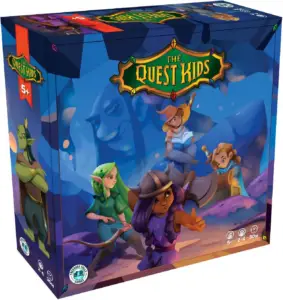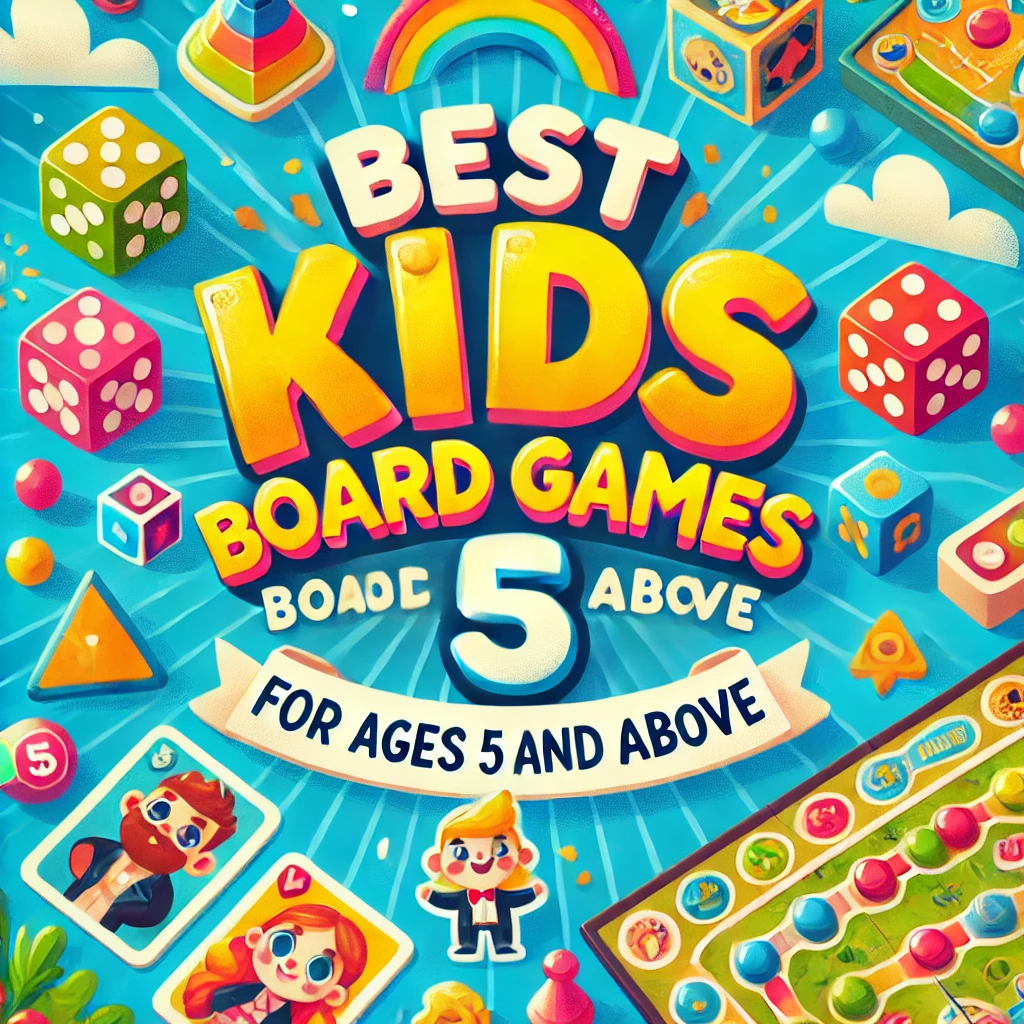Searching for the right kids board game can sometimes be tough., Children board games need to be fast to learn, interactive and easy to understand.
We have selected some of the best kids board games for ages 5 and above for you to consider.
This list covers games that involve action and dexterity, puzzles and simple strategy to encourage critical thinking.
Animal Upon Animal
“Animal Upon Animal” is a simple stacking game where players race to get rid of their animal pieces by carefully balancing them on top of a crocodile. Perfect for kids but equally fun for adults, it combines strategy with dexterity, making every turn exciting as the stack grows higher and more precarious. Find out more.

Rhino Hero

Rhino Hero is a fun and fast-paced dexterity game where players take turns stacking cards to build a towering skyscraper without knocking it over. This game has simple mechanics, and the mischievous Rhino Hero character in the game adds extra challenges and laughter. This is a light-hearted game that combines strategy, skill, and a lot of laughs. Find out more.
Stack, Balance and Battle in Rhino Hero Super Battle

Build wobbly towers, move your superhero up the structure, and battle opponents while trying to keep everything from tumbling down. This updated variant of Rhino Hero provides hilarious challenges, and is fun for all ages. Be the hero standing tall when the tower falls. Find out more.
Buy on Amazon
Dragomino – The Tile-Laying Adventure That Brings Dragons to Life

Dragomino is a simple yet strategic tile-laying game perfect for young children, offering quick gameplay, adorable artwork, and just the right amount of challenge. With its dragon theme and easy-to-learn mechanics, it’s a hit for family game nights and helps kids develop their strategic thinking while having fun. Find out more.
Can You Catch the Pie-Thieving Fox? Team Up in Outfoxed!

Outfoxed is a cooperative deduction game for 2 to 4 players, perfect for young detectives! Players team up as chicken sleuths to catch the sneaky fox who stole the pie, all while racing against time before the fox escapes. It is easy-to-learn, possesses charming gameplay, and introduces children to teamwork and problem-solving. Find out more
A Family-Friendly Dungeon Crawl: Treasure Hunts and Teamwork in The Quest Kids

The Quest Kids is a fun, family-friendly dungeon-crawl board game designed to introduce younger players to the world of RPGs. With its colorful artwork, simple rules, and cooperative gameplay, players can explore caves, fight monsters, and collect treasures while helping each other along the way. Whether you’re a seasoned gamer or new to the hobby, this charming game promises adventure and teamwork in every session. Want to dive deeper into the adventure? Find out more
Buy on Amazon
